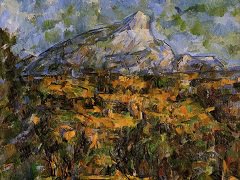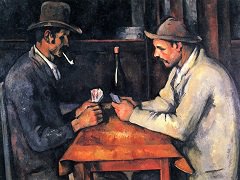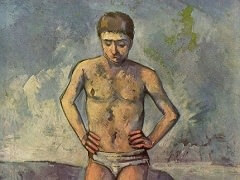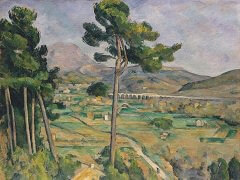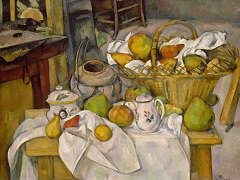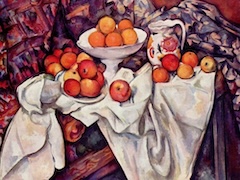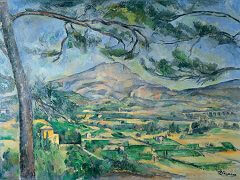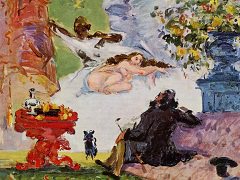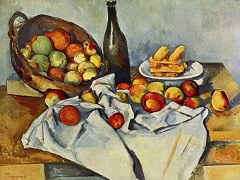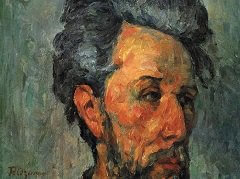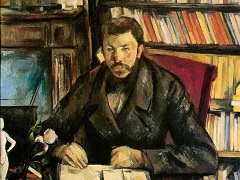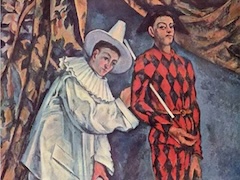Bacchanalia. The Battle of Love, 1880 - by Paul Cezanne
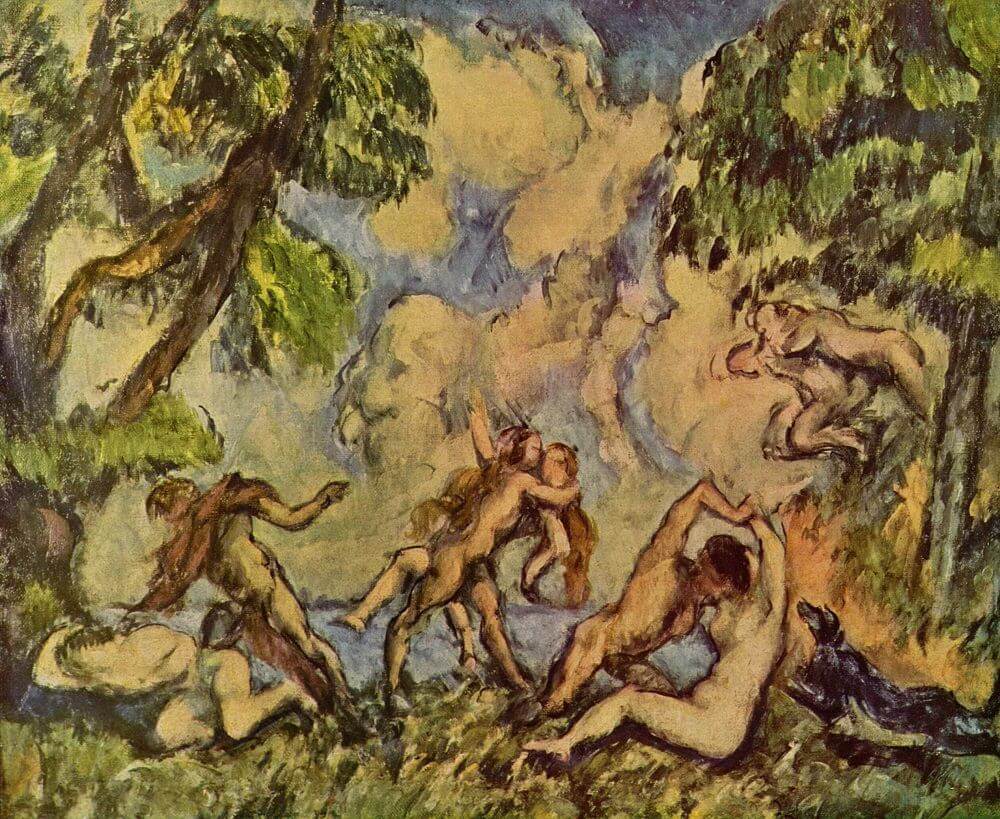
This little painting, which once belonged to Pierre-Auguste Renoir, is a theme out of Venetian art, perhaps by way of a Poussinist artist, but is conceived in another mood. The Renaissance bacchanals are scenes that combine love-play, drinking, and dancing; they are images of gaiety and joyous release. Cezanne's painting is of a struggle, the violence of love, even rape. Four men attack four women; a leaping dog adds another note of animality. These are not pagan idyllic nudes from Greek mythology, but a modern fantasy like Cezanne's solemn picnic of clothed and nude figures. The multiplication of figures increases the violence, but also makes it more natural, an action of all men and not a solitary crime. It is a much simpler and clearer composition than the bacchanals of Titian and Poussin; the four pairs of nudes are distinct, isolated from each other, but grouped in succession with a continuous dance of richly curved lines. Their struggling forms, their rippling silhouettes, appear again in the agitated clouds and trees, diffusing the passion and energy of the bodies throughout all nature. The swirl of forms has a baroque animation. Everything moves - figures, trees, clouds, ground, dog. It is the fury and intoxication of desire.
A passage in a letter of Cezanne to Zola written in 1878, commenting on his friend's new book, Une Page d"Amour, and observing its superiority to an earlier work, L'Assom-moir, applies very well to this picture:
The backgrounds are so painted in that they are suffused with the same passion that motivates the characters, and thus are more in harmony with the actors and less detached from the whole. They seem as it were to be alive and to participate in the sufferings of the living characters."
At this point in his art, the subject represents for Cezanne not his essential theme, but an isolated idea, which he is able to carry out, however, with a remarkable ease, as if it were a habitual subject. The brushwork is rarely more fluid and sure. The two trees at the left are a fascinating invention of opposed forked shapes - metaphors of the standing and inverted figures - joined by a branch. This painting from imagination shows the power of Cezanne's compositional fantasy, his ability to find the expressive shapes when nature is not before him to stimulate and guide him. His own strong feelings are also a source; the vital movement of the bodies, like the elaboration of the landscape, comes from within. But comparison of the picture with an earlier version, near it in time, shows how much Cezanne's work owes to self-criticism. A great deal has been revised, the advance to the final form is immense; yet the latter looks perfectly spontaneous and free.


